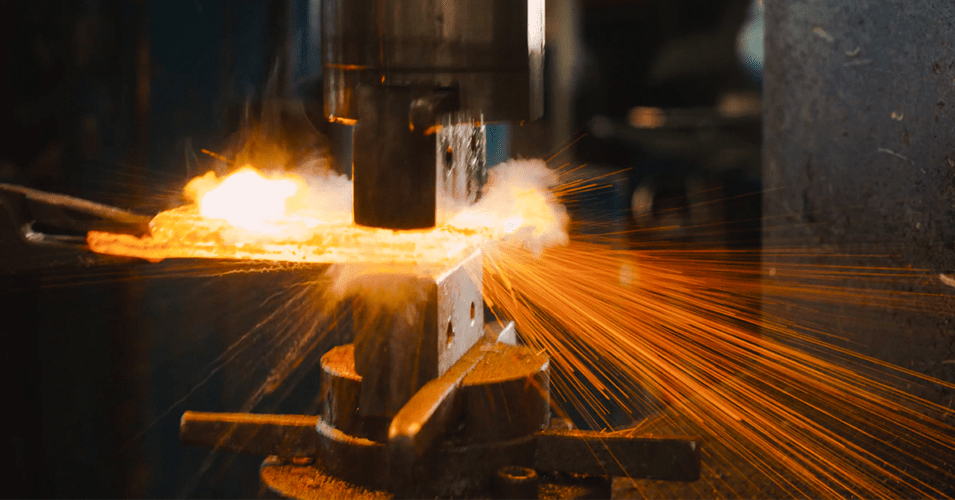Forging is one of the oldest and most fundamental metalworking techniques known to humanity. It involves the shaping of metal through the application of heat and force. Among the various methods of forging, hot forging is one of the most widely used and versatile processes. Whether you’re interested in pursuing forging as a hobby or as a potential career, this beginner’s guide will provide you with the essential knowledge to get started with hot forging.
What is Hot Forging?
Hot forging is a metalworking process that involves heating a metal to a specific temperature and then shaping it using mechanical force, such as hammer blows or presses. The key characteristic of hot forging is the elevated temperature of the metal during the forming process. This temperature makes the metal more malleable and allows it to be shaped into various desired forms.
Materials for Hot Forging
Hot forging is primarily used for ferrous (iron-based) and non-ferrous metals. Common materials suitable for hot forging include:
- Steel: Carbon steel, alloy steel, and stainless steel are commonly forged materials.
- Aluminum: Lightweight and corrosion-resistant, aluminum is often forged for aerospace and automotive applications.
- Brass and Bronze: Non-ferrous metals like brass and bronze are used for decorative and functional items.
- Copper: Copper forgings are used in electrical components and plumbing.
- Titanium: Known for its high strength-to-weight ratio, titanium is used in aerospace and medical applications.
Basic Hot Forging Equipment
To start hot forging, you’ll need some essential equipment:
- Forge: A forge is a heating source that can reach the necessary temperature to work with your chosen metal. Common types include gas forges and coal forges.
- Anvil: Anvils provide a solid and stable surface for shaping metal. They come in various sizes and shapes to suit different forging needs.
- Hammers: Different types of hammers, like cross-peen and ball-peen hammers, are used for shaping the metal. Select hammers that are comfortable for you to handle and suited to your specific projects.
- Tongs: Tongs are used to hold and manipulate the hot metal safely. They come in various shapes and sizes to match the workpiece’s shape.
- Safety Gear: Safety goggles, heat-resistant gloves, and protective clothing are essential to protect yourself from the high temperatures and potential sparks.
The Hot Forging Process
- Heating: Heat your metal in the forge until it reaches the recommended forging temperature for the specific material you’re working with. This temperature can vary depending on the type of metal, but it’s typically between 1,600°F to 2,300°F (870°C to 1,260°C).
- Shaping: Once the metal is at the correct temperature, remove it from the forge using your tongs and place it on the anvil. Use your hammer to shape and manipulate the metal as desired. Forging involves repeated heating and hammering until the desired shape is achieved.
- Cooling: After forging, the metal should be cooled slowly to avoid cracking. This process, called annealing, involves placing the hot workpiece in an insulating material like vermiculite or ashes.
- Finishing: Depending on your project, you may need to perform additional steps such as grinding, polishing, or heat treatment to achieve the desired final appearance and properties.
Beginner Tips
- Start Simple: As a beginner, begin with simple projects to build your skills and confidence. Basic items like hooks or small tools are excellent starting points.
- Safety First: Always prioritize safety. Wear the appropriate safety gear, work in a well-ventilated area, and be cautious when handling hot metal.
- Learn from Experts: Consider taking classes or seeking guidance from experienced blacksmiths or metallurgists. Learning from others can accelerate your progress and help you avoid common mistakes.
- Practice Patience: Hot forging is a skill that takes time to develop. Be patient with yourself and embrace the learning process.
Conclusion
Hot forging is an ancient and captivating craft that allows you to transform raw metal into functional and artistic creations. By understanding the basics of this process and acquiring the necessary equipment, you can embark on a rewarding journey into the world of hot forging. Start with small projects, stay safe, and don’t hesitate to seek guidance from experienced forgers. With practice and dedication, you’ll be able to create impressive forged pieces and hone your skills as a blacksmith.

